Description
The Fiji Fox Face (Siganus uspi) can reach a maximum size of around 6 inches (15 cm). It has a compressed body and a pointed snout. The body is predominantly black, with white markings on the face. Their tails are yellow which contrasts nicely.
Taxonomy
This fish belongs to the genus Siganus, which is part of the family Siganidae. This family is commonly known as the rabbitfish family. The closest relatives of the Fiji Fox Face include other species within the Siganus genus, such as Siganus corallinus and Siganus puellus. The etymology of the species name “uspi” is not readily available.
Natural Habitat
The natural habitat of the Fiji Fox Face consists of coral reefs and rocky areas with abundant algae growth. It prefers areas with moderate water movement and plenty of hiding places among the rocks and coral structures. These habitats provide the necessary food sources and shelter for the fish.
Keeping Fiji Fox Face Healthy
The Fiji Fox Face requires a well-maintained aquarium with stable water parameters. It is important to provide a tank with plenty of rock and hiding spots to mimic its natural habitat. The care level for this fish is considered moderate, as it requires a diligent approach to water quality and diet.
Special Requirements and Feeding
The Fiji Fox Face is primarily herbivorous and feeds on various types of marine algae. A varied diet consisting of high-quality algae-based foods, such as seaweed sheets or pellets, should be provided. It is also beneficial to include occasional feedings of frozen or live foods, such as brine shrimp or mysis shrimp, to supplement its nutritional needs.
How Many Should I Keep?
It is generally recommended to keep the Fiji Fox Face as a single specimen or in small groups, preferably in larger aquariums with ample swimming space. When kept in groups, it is essential to monitor their behaviour and ensure that aggression does not occur.
Lighting Preference
The Fiji Fox Face benefits from moderate to high lighting in the aquarium, as it aids in the growth of algae, which is a vital part of its diet.
Suitable Tank Mates
The Fiji Fox Face can be compatible with a variety of tank mates, including other peaceful fish species that are not aggressive or territorial. However, caution should be exercised when selecting tank mates, as these fish may nip at the fins of slower-moving or long-finned fish.
Reproduction in the Wild
The reproduction of the Fiji Fox Face (Siganus uspi) in the wild follows a typical pattern for rabbitfish species. These fish are oviparous, meaning they reproduce by laying eggs. Reproduction is triggered by environmental cues such as changes in water temperature and availability of food.
Breeding Siganus uspi
- Set Up:
To breed Fiji Fox Face in captivity, a well-maintained aquarium with appropriate water parameters and plenty of hiding places should be provided. The water temperature should be maintained around 78-82°F (25-28°C).
- Courtship/Spawning:
During courtship, the male Fiji Fox Face displays vibrant colours and engages in chasing behaviour towards the female. Spawning occurs when the female releases a cloud of eggs, which are then fertilized by the male.
- Rearing:
After spawning, the fertilized eggs will float freely in the water column. The eggs hatch within a day or two, and the larvae begin their journey as planktonic organisms. Rearing the larvae is a challenging task that requires specialized equipment and expertise.
Sexual Dimorphism
There is limited information available regarding sexual dimorphism in the Fiji Fox Face. In general, rabbitfish species do not exhibit significant differences in appearance between males and females.
Distribution
Siganus uspi are naturally found in the waters surrounding Fiji, hence its common name. It is important to note that the Fiji Fox Face is not a captive bred or line bred strain; it originates from the wild population in Fiji.
Summary
The Fiji Fox Face (Siganus uspi) is a captivating fish with its vibrant yellow and black colouration. It requires a moderate level of care and attention to maintain its health in an aquarium setting. The fish primarily feeds on marine algae and benefits from a varied diet that includes algae-based foods and occasional live or frozen foods. When kept in an aquarium, caution should be exercised when selecting tank mates to avoid aggression or fin-nipping. In the wild, these fish reproduce by laying eggs, and breeding in captivity requires appropriate tank setup and careful attention to courtship, spawning, and rearing processes. The species is naturally distributed in the waters around Fiji and is not a captive bred strain.
The Fish pictured here are representative only and the livestock you receive may vary in pattern, coloration, and shape.

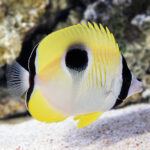
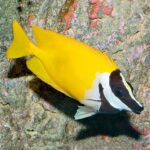




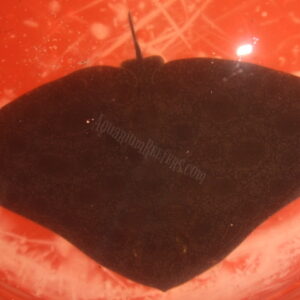
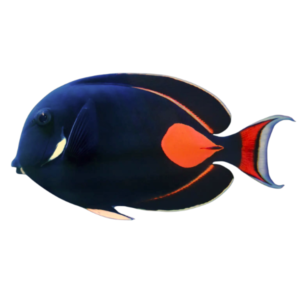
 Scribbled Bimaculatus Anthias Male
Scribbled Bimaculatus Anthias Male 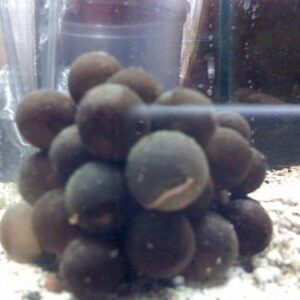 Cuttlefish Egg Cluster
Cuttlefish Egg Cluster 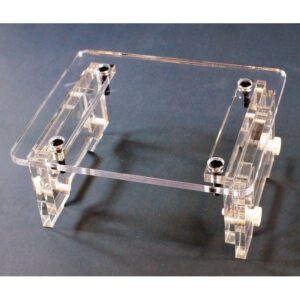 Bubble Magus Skimmer Stand Medium
Bubble Magus Skimmer Stand Medium 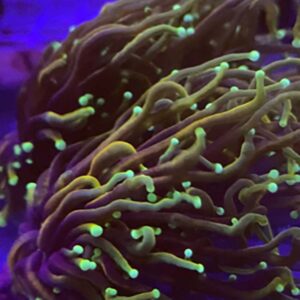 Dragon Soul Torch F14
Dragon Soul Torch F14  1/2" Y Fitting
1/2" Y Fitting  Melafix 16oz API Freshwater Aquarium
Melafix 16oz API Freshwater Aquarium  Bubble Magus Protein Skimmer C9
Bubble Magus Protein Skimmer C9  CORAL POWER FW (FLAT WORM) DIP - CORAL ESSENTIALS
CORAL POWER FW (FLAT WORM) DIP - CORAL ESSENTIALS  JULIAN'S THING MULTI-USE TOOL - Two Little Fishies
JULIAN'S THING MULTI-USE TOOL - Two Little Fishies  API Stress Coat + 32oz ( pond version )
API Stress Coat + 32oz ( pond version )  NYOS Coral Nectar
NYOS Coral Nectar  NYOS Phosi-Ex 1000ml
NYOS Phosi-Ex 1000ml  Frag Recover 250ml - Brightwell Aquatics
Frag Recover 250ml - Brightwell Aquatics  Green Cynarina
Green Cynarina 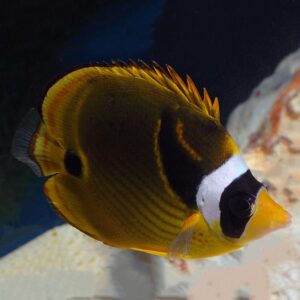 Raccoon Butterfly, Lunula
Raccoon Butterfly, Lunula  Lyretail Anthias Male
Lyretail Anthias Male
Reviews
There are no reviews yet.